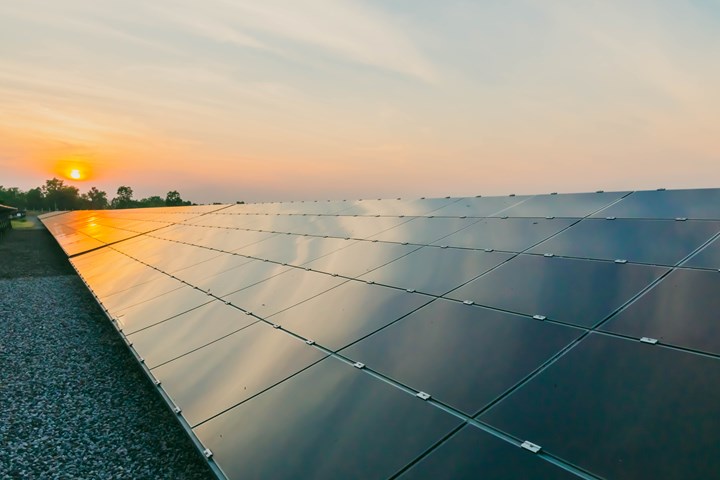XlynX cross-linking compound enables ultra-stable perovskite solar cells
A recent case history shows 99% stability of cells after 1,000 hours using BondLynx treatment, emphasizing its boosted bond strength that can also be used to strengthen polymers and fibers.
In a recent study published in the sustainable energy research journal, Joule, BondLynx — a molecular cross-linker designed and manufactured by XlynX Materials (Victoria, B.C., Canada) specialty chemical company — was used to covalently bond with the organic cations in perovskite solar cells (PSCs), a next-gen technology that offers a lower cost and easier-to-manufacture alternative to conventional silicon solar cells.
According to the National Renewable Energy Laboratory (NREL), perovskite, a mineral, “offer[s] excellent light absorption, charge-carrier mobilities and lifetimes” demonstrating competitive power conversion efficiencies for solar energy. While major advances hav been achieved the past decade, PSCs’ long-term stability when exposed to environmental stimuli has remained an obstacle on their path to commercialization.
When perovskites are exposed to heat and sunlight, their volatile organic components have a tendency to escape or migrate from the perovskite layer. This leads to rapid degradation, which significantly reduces the efficiency, stability and performance of PSCs. Solving this problem and improving the operational lifetimes of PSCs requires the immobilization of these organic components, known as organic cations. While several strategies have been employed in the past to address this instability, none have been able to effectively protect the perovskite material from environmental exposure.
XlynX’s new class of adhesives, called “molecular glues,” however, believes to have an answer to this problem, with positive results:
- Illumination stability: After 200 hours of continuous operation under 1 sun illumination (1 kilowatt/square meter), untreated control PSCs exhibited a 35% loss in power conversion efficiency. In comparison, BondLynx-treated PSCs showed remarkable stability, retaining nearly 99% of their initial efficiency even after 1,000 hours of continuous illumination.
- Thermal stability: When exposed to constant heat (60°C), untreated PSCs demonstrated poor thermal stability, losing 27% efficiency after 600 hours of continuous operation. In comparison, BondLynx-treated PSCs maintained nearly 98% efficiency under the same conditions.
- High efficiency: Overall, BondLynx-treated PSCs achieved a high certified efficiency of more than 24% with long operational stability over 1,000 hours.
The reason BondLynx is effective is because it forms chemical covalent bonds with the organic components in PSCs to strongly immobilize them, thereby reducing the losses of efficiency, stability and performance typically seen in PSCs. With no significant reduction in performance over the course of the study, the stability improvements realized by BondLynx are expected to extend far beyond the 1,000 hour mark.
“It’s great to see these results published in Joule,” remarks Sean Bourquin, director of strategy for XlynX Materials. “But mostly we’re looking forward to engaging with companies operating in the perovskite field, as this could have a huge impact on the future of this technology.”
The work of this peer-reviewed study also suggests that, in addition to enabling highly efficient and ultra-stable PSCs, there are potential benefits to be realized in other perovskite-based optoelectronic applications.
To read the study and learn more about these BondLynx results, visit this link.
Related Content
-
Recycling end-of-life composite parts: New methods, markets
From infrastructure solutions to consumer products, Polish recycler Anmet and Netherlands-based researchers are developing new methods for repurposing wind turbine blades and other composite parts.
-
How composites have become a necessity
Composites used to be one of many material options across industries and applications, but that's not the case anymore.
-
Collins Aerospace to lead COCOLIH2T project
Project for thermoplastic composite liquid hydrogen tanks aims for two demonstrators and TRL 4 by 2025.

















